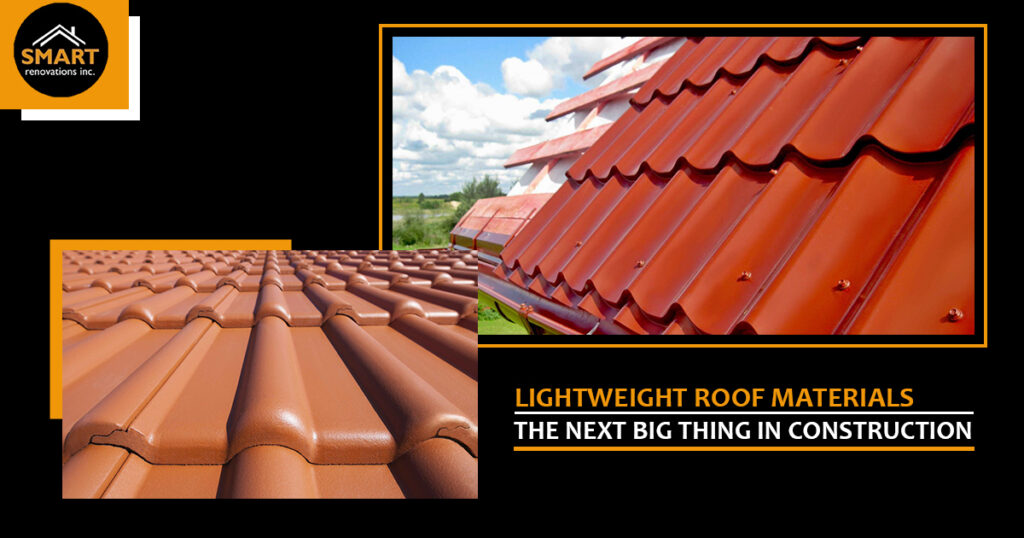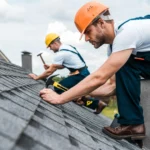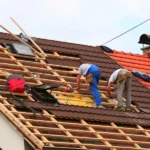Over the years, as the construction industry tackled the needs of the time, they have adopted sustainable and efficient materials. Among these, the lightweight roof materials have proved to be a big winner. It’s popular because they’re practical, good for the environment, and they save money. Architects, homeowners, and contractors are starting to request more of these materials for their small and large projects.
Roof materials that are lightweight make a unique solution to the problem of carrying the structural load on buildings. Being so versatile, affordable, and durable, they’re ideal for many applications. However, as the industry is becoming more eco-friendly and more innovative, lightweight roofing emerges as a real game changer.
Why Choose Lightweight Roof Materials?
Though lightweight roofing materials are easy to install, there are benefits to using them. They are a great way to reduce stress on the building’s structure. Its benefit lies in its provision of more freedom for architectural designs because fewer reinforcements are needed. As an example, lightweight roofing can be placed onto structures that are unable to support the weight of unmodified roofing materials.
In earthquake zones or other natural disaster-prone areas, lightweight roofing material can make a big difference. Heavy roofing systems make the risk of collapse during seismic activity. This risk is reduced, however, by lightweight materials that improve overall safety. That’s one reason why EPDM roofing contractors often recommend lightweight materials when the design includes a flat roof.
Types of Lightweight Roof Materials
Metal Roofing Panels
Highly durable, low-weight metal roofing panels are widely used. There are two main metals used for this purpose, namely aluminum and steel. Harsh weather conditions are not a problem for these panels, and they’re perfect for commercial and residential buildings.
Asphalt Shingles
The asphalt shingles are meant to be inexpensive and lightweight. They’re easy to install and come in lots of different colors and designs. Because they are so lightweight, they work particularly well for structures with low load-bearing capacity.
Also check out these:
6 Siding Materials That Will Transform Your Home’s Exterior
Sustainable Roofing in 2030: What to Expect Next
EPDM Roofing
A synthetic rubber material known as EPDM roofing, known for its incredible durability and flexibility. Being able to withstand extreme weather and being used for flat roof applications makes it widely used. Many of these EPDM roofing contractors choose this material because it is inexpensive and energy efficient.
Clay and Concrete Tiles
The traditional clay and concrete tiles are heavy, but modern manufacturing processes bring the lighter versions. In addition to being a nice-looking tile, they also offer excellent insulation.
Synthetic Slate
Synthetic slate looks and feels like old-school slate roofing but is much lighter in weight. Being sturdy, pretty to look at, and easy to install, it’s a good choice for a lot of projects.
Environmental Benefits of Lightweight Roofing
Some ways that lightweight roofing materials help contribute to sustainability are. As a rule, their production is less intensive regarding the use of resources; this led to a lower environmental footprint. Laminated materials like metal and synthetic slate are highly recyclable and very ecofriendly.
Furthermore, many lightweight materials are more energy efficient. For example, EPDM reduces heat absorption and keeps the indoor space temperatures more consistent in sharp contrast to other materials. And this quality makes the home more energy efficient, with lower utility bills.
Cost-Effectiveness of Lightweight Roofing Materials
Lightweight roofing materials reduce long-term expenses and lower construction costs. The ease with which they install drives down labor costs, and their longevity decreases the need for repairs. Also, lightweight roofs put less stress on a building’s foundation, which can save you money on structural maintenance.
According to many EPDM roofing contractors, EPDM roofing is the most affordable of all roofs available in the marketplace. Its long lifespan and limited maintenance needs make it a good, economic choice for flat roofing applications.
Challenges to Consider
Lightweight roofing materials have a lot going for them, but there are challenges when it comes to them. Some materials, however, are less able to withstand impact than others and are therefore more vulnerable to being damaged in their extreme conditions. But day-to-day maintenance as well as quality installation is key to long life and good performance.
There are challenges to address, but it must be tackled by the selection of professional, experienced EPDM roofing contractors. Contractors with knowledge in this area can provide expert guidance on which materials would best suit your individual needs and then adequately install them.
Also check out these:
Choosing the Right Roofing Material for Coastal Areas
The Importance of Proper Attic Ventilation for Roof Longevity
The Growing Popularity of Lightweight Roofing
The construction industry is constantly in flux, and lightweight roofing materials are at the head of the change. The development of more energy-efficient, lighter, and stronger roofing is being driven by innovations in the material science. Incorporating lightweight materials into this evergreen category is likely to grow alongside the increasing demand for sustainability, as more builders and homeowners value green building materials.
One of the reasons they’re so popular is because they’re architecturally flexible. Lightweight materials are compatible with a myriad of design styles, ranging from sleek modern to more traditional looks. The advantages of their adaptability make them an ideal option for a variety of building work.
Particularly, EPDM roofing is becoming popular among professionals. Due to its affordability, durability, and eco-friendly qualities, flat roof designs can be created using it as a dependable choice. Promoting this versatile material is the role of reputable EPDM roofing contractors.
Conclusion
The future of construction is lightweight roof materials. Having a perfect blend of durability, cost-effectiveness, and sustainability makes them an obvious choice for modern buildings. Lightweight materials are the most versatile and best-performing option, no matter what your project is, residential or commercial.Working with experienced EPDM roofing contractors will help you get the most from these wonderful materials. When you go for lightweight roofing, you are making an investment in a solution that enhances the value, safety, and environmental footprint of your building.
Check our google store: Smart Renovation







